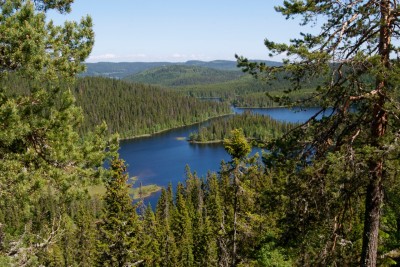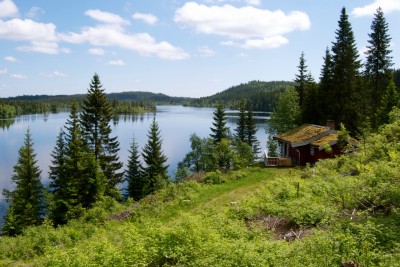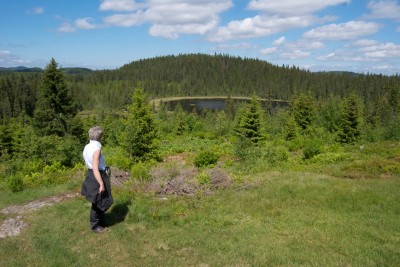EXCURSIONS: Wednesday was Norway’s version of Midsummer Eve, known as Sankthansaften, and the weather was pretty close to perfect for the traditional boat rides and bonfires. We decided to head inland, though, to the forests called marka that surround Oslo, and it was a memorable afternoon and evening indeed.

Norway’s capital, like most Norwegian cities and towns, is bordered by vast areas of hills, lakes and forests that are open to the public for walking, bicycling and paddling in the summer and skiing in the winter. A huge network of marked trails and signposts makes the forests user-friendly in addition to being accessible.

So off we went, driving first to Ringkollen in the western forest called Krokskogen, and then down to Jonsetangen on the banks of the lake called Øyangen. The fish were jumping, sheep grazed freely and the trails were open and inviting as we headed off for two summits called Nautsundkollen and Spålsberget.
They’re found in the heart of marka, and offer views in all directions. Six hours and around 15 kilometers later we were back at the car, weary but happy, not least because we’d also found two “kjentmanns” posts along the way, small signs put up by the local outdoors group Skiforeningen (external link, mostly in Norwegian) and aimed at helping hikers and skiers become more kjent (familiar) with the area.

Every two years the group puts up 50 new posts all over the forests and publishes a booklet (external link, click on “Story in English”) that describes the areas where the posts are located. The idea is to go looking for them, and become more familiar with marka in the process.
It was a great way to spend the hours leading into one of Norway’s “whitest nights,” which are downright bright further north where the sun never sets at this time of year. Thousands of others, though, cast off on boat rides for sailing and supper on the sea.
After several years of rain during what are supposed to be the lightest days of the year, Norwegians had earlier flocked outdoors on the summer solstice itself (June 21), which also was sunny and clear although a bit chilly. The good weather continued through Sankthansaften on June 23, but gave way to overcast skies on Sankthans on the 24th.
Newspaper Aften reported that around 50 bonfires were lit along the Oslofjord Wednesday evening when the sun did dip behind the western hills. Called a “Sankthansbål,” the bonfires are regulated for safety reasons but rarely turned down.
“Lighting bonfires on Sankthansaften is a nice tradition,” Thorbjørn Jøssund of the Oslo fire department told Aften. “We seldom turn down applications to light them, instead we just lay down certain requirements.” Only dry material is allowed on the bonfires, not plastic or pollutants.
In the city of Ålesund on Norway’s northwestern coast, local civic boosters aim to mount the biggest bonfire ever. Their pile of wood and paper will be at least 38 meters (125 feet) before it will be lit in a special ceremony on Friday evening.
For more photos, click here.
Views and News from Norway/Nina Berglund
Join our Forum if you’d like to comment on this story.

